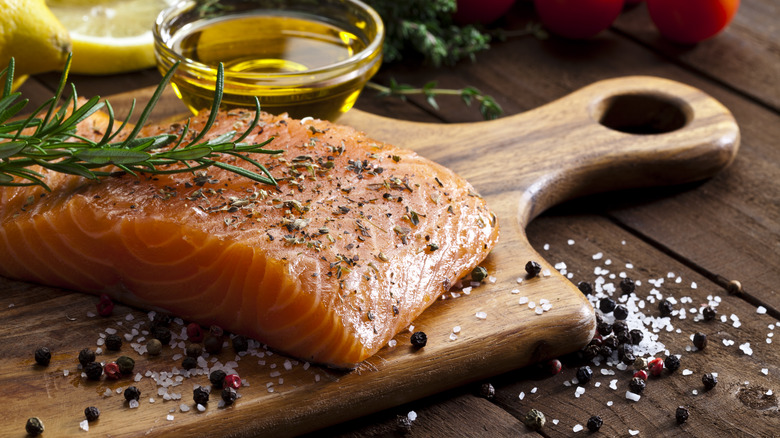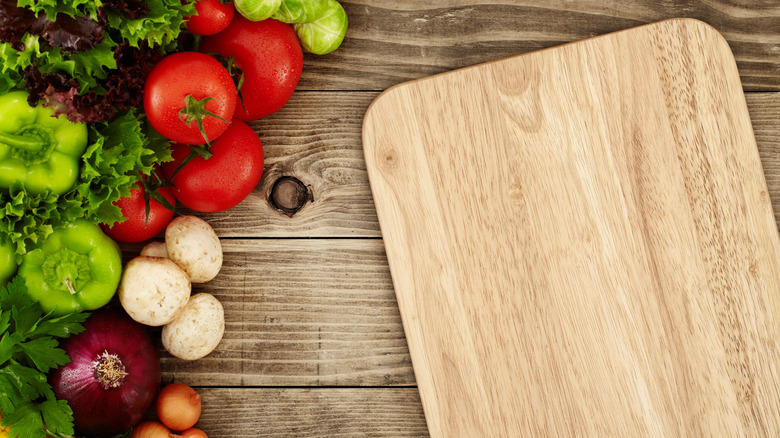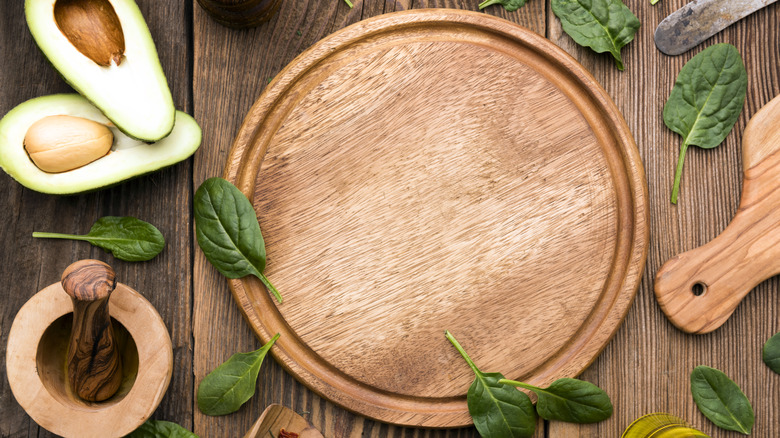Why It Can Be Dangerous To Cut Meat On A Wooden Board
A perfectly cooked cut of meat is certain to impress even the pickiest of dinner guests, but it's not always so easy to prepare. Plenty of safety precautions should be taken because raw meat can contain potentially harmful bacteria; if you ingest any of that bacteria by accident, you can get severely ill. One tricky rule to remember is to always prepare meat on a plastic cutting board rather than a wooden one. Wood is porous, which can trap bacteria — even when you try to wash it.
A wooden cutting board's small holes mean bacteria can get stuck in there, so when you try to rinse it with soap and water, there's a chance that some of that bacteria might still remain. Once you wash it and prepare other food using the same cutting board, you increase your risk of foodborne illness. Your best bet is to use a plastic, nonporous cutting board when handling meat because the bacteria will be more easily removed with soap and water.
Wooden cutting boards are porous
When you cut meat on a wooden cutting board, the bacteria from the raw meat transfers to the board and seeps into those tiny holes, making removing it more challenging. To properly clean the board, thoroughly wash it with hot, soapy water, per the USDA. Wash both sides; otherwise, the uneven water can cause the board to warp. You can also wash the board in the dishwasher, as long as you know it to be dishwasher safe (make sure to double-check, as wood can also warp in the dishwasher, and you don't want to risk ruining the board).
If possible, skip the wooden cutting board and opt for its plastic counterpart. Plastic is nonporous, meaning you won't have to worry about damaging bacteria seeping into those holes, making cleanup much easier and also saving you from the headache of having to make absolutely sure you're sanitizing the board well enough to get into all of those tiny crevices.
How to properly dry a wooden cutting board
When it comes to drying, get any surface-level moisture off with a kitchen towel, then stand the board upright for the remainder of the drying time. This ensures that no water gets stuck within the board, which can also lead to warping. Make sure the board has absolutely no wet spots before putting it away.
If you're still concerned about your cutting board harboring bacteria, there is another way to ensure it gets sanitized. The USDA recommends blending one tablespoon of chlorine bleach with one gallon of water and using that mixture to scrub the board. However, the organization also warns that wooden cutting boards can become worn and develop deep grooves over time, and once that happens, they become harder to clean and should be thrown away. To avoid cross-contamination, use two cutting boards while you prepare food — one for raw foods, such as meat, and another for safe foods, such as vegetables.


